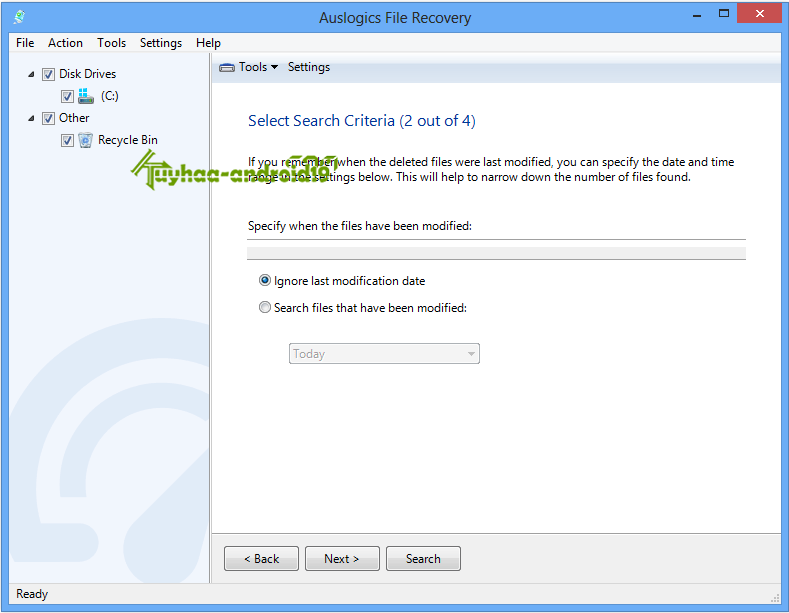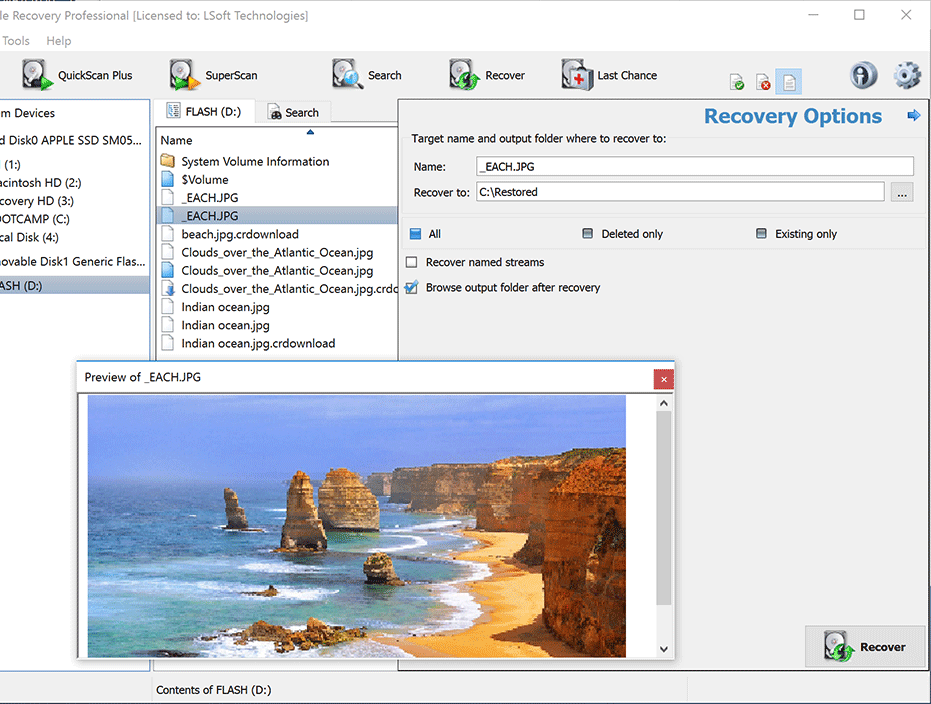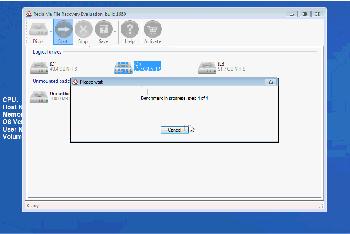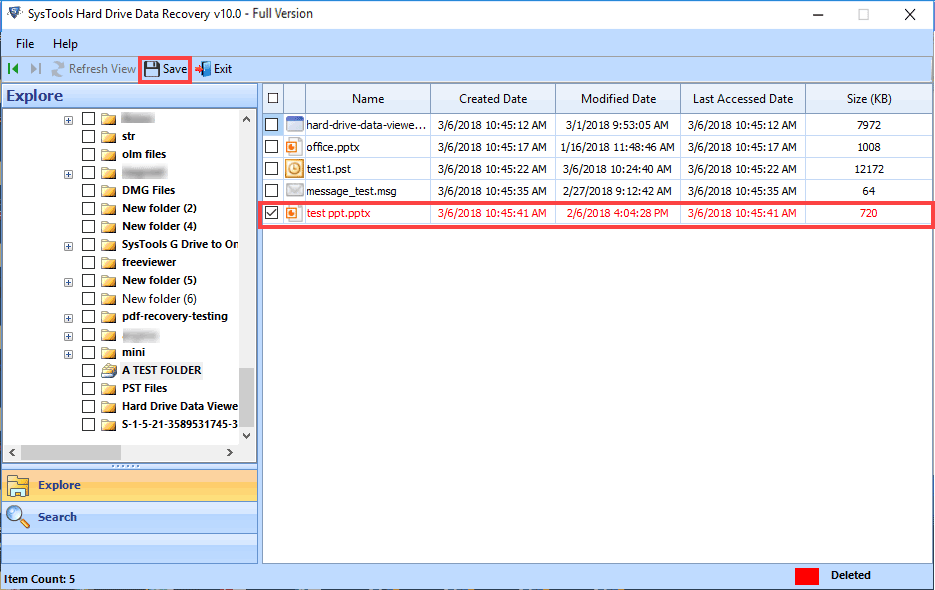Saving recovered files to a network share. What is the difference between RAW and Unclassified folders in ReclaiMe File Recovery. Short introduction to using ReclaiMe File Recovery. In general data recovery scenarios from single disks fall into three categories: UNDELETE: Deleted file recovery. The file system is intact. Files just ‘flagged’ as deleted, this is a normal file system function. Generally, undelete software can easily detect these files again.
- ReclaiMe File Recovery recovers data from FAT, exFAT, NTFS, and ReFS filesystems, used by Windows from XP onwards and by digital cameras and similar devices. EXT2, EXT3, EXT4, and XFS filesystems used in Linux and most NAS devices. BTRFS filesystem, notably used in modern NETGEAR ReadyNAS devices.
- Today I’d like to introduce ReclaiMe file Recovery Software. ReclaiMe is a multipurpose data recovery software which works with many data storage devices and almost with any filesystem types. Hello and welcome to my blog! My name is Elena Pakhomova and I’m a co-founder of ReclaiMe File Recovery Software.
- May 17, 2018 ReclaiMe File Recovery Software is the most easy to use, feature rich and effective file recovery and undelete software I have ever used (and I used a lot of different products). Whether you need it for undelete, unformat, a RAW disk, partition recovery or even to get data back from your crashed NAS.
Reclaime File Recovery Keygen
The best all-round data recovery tool for end users.
Every now and then I test against updated versions of most popular file recovery software out there. Until now updated versions of Stellar, Clever Files (Disk Drill), Easeus, Minitool etc. did not make me change my mind. In fact, some of the updated versions feel like a step back compared to earlier versions. ReclaiMe simply produces better results and is easier to use (although the latter is somewhat subjective, I admit). It’s faster too in many scenarios, often you can view and copy data in a matter of minutes while competing software is far from producing and displaying a directory tree.
Compared to professional grade data recovery software: ReclaiMe shares the excellent recovery capabilities with it’s professional counter part ReclaiMe Pro. As such it’s efficiency is comparable to professional grade software like R-Studio, FileScavenger and UFS Explorer. ReclaiMe Standard and Ultimate are much easier in use though. Advantage of such pro grade software is that it is frequently updated based on experiences and requests of professional data recovery engineers. For a large part this explains why this type of software outperforms other file recovery software.
Compared to consumer grade data recovery software: There are too many too list in this category, however the most popular ones would be Stellar, Easeus, Minitool, Disk Drill, Recoverit and many more. In my opinion, which is based on 20+ years of experience in writing, testing and using data recovery software, ReclaiMe beats each and every one of these with regards to recovery results and ease of use. And then I haven’t even touched a subject like data recovery from NAS devices, something that the majority of popular tools isn’t even capable of.
So yes, in my opinion ReclaiMe File Recovery still is the recommended all-round data recovery tool.
What about Ontrack Easy Recovery?
Every now and then I get the question why I never mention Easy Recovery from Ontrack. This is because Ontrack never actually produced it’s own software. Their first ever software under the brand Easy Recovery was actually produced by a company they purchased. Original software was called ‘Tiramisu’. And since then they simply licensed software from various companies such as Stellar and LC-Tech. So, the software is not original and also it is never actually an upgrade built upon experiences from previous versions.
ReclaiMe step by step

- Download ReclaiMe. It is wise to save the software to a different drive than the one you want to recover files from.
- Install it.
- If the disk has physical issues, best to image it. I explained how to do this in this post.
- Run ReclaiMe File Recovery. It will start with detecting disks and file systems, this will take some time.
- Select the drive containing the lost data
- Click Start
- 9 out of 10 times ReclaiMe will be able to detect you files within a few minutes after which it pauses the scan.
- Select your files and save them to another drive by clicking Save.
Select Drive
Drive Scan in progress ..
Initial scan finished in less than 2 minutes ..
Select your files and click Save
ReclaiMe File Recovery Ultimate is the most easy to use, feature rich and effective file recovery and undelete software, whether you need it for undelete, unformat, a RAW disk, partition recovery or even NAS recovery.

94% success rate, based on 2015 statistics.
Reclaime File Recovery Ultimate Discount Coupon
[Note: Source for success rate: ReclaiMe.com]
And I am very proud that ReclaiMe is now available via DiskTuna. We also offer pre-sales and technical support, so don’t hesitate to contact me using the contact form at the bottom of this page. Alternatively you can email me at joep@disktuna.com.
Which version, Standard or Ultimate?
The Standard version supports all Windows file systems, so FAT, FAT32, exFAT, NTFS and ReFS. So, if you need to recover data from any of these, you can do this with the Standard license.
To recover data from Linux and Apple Mac file systems, NAS or RAID arrays you need the Ultimate version.
If you however run the demo however, and just go ahead with the recovery, ReclaiMe will automatically tell the license you need for the type of recovery you are doing in the space next to the toolbar. It will either say ‘Required license STANDARD‘ or ‘Required license ULTIMATE‘.
You can then purchase a license online, enter the license and continue the recovery (saving your files).
At a glance:
| ReclaiMe Standard | ReclaiMe Ultimate |
|---|---|
Recover data from Windows PCs
| Recover Windows and Linux PCs, Macs, and NASes
|
| $79.95 Secure Purchase | $199.95 Secure Purchase |
| Download and try ReclaiMe | |
| |
Meet ReclaiMe File Recovery Software:

Using ReclaiMe File Recovery Software

In general data recovery scenarios from single disks fall into three categories:
- UNDELETE: Deleted file recovery. The file system is intact. Files just ‘flagged’ as deleted, this is a normal file system function. Generally, undelete software can easily detect these files again.
- UNFORMAT: The volume is still present and available, though it can not be accessed. Typically Windows wants to format the volume and displays the file system as RAW or unknown. If the volume was re-formatted, it can be accessed but is (almost) empty.
- PARTITION RECOVERY: The drive is no longer present. Disk Management shows unallocated space.
| Undelete | RAW / Unformat | Partition Recovery |
|---|---|---|
To recover deleted files, simply select the drive containing the deleted files and click Start. Recover:
| To recover files from a RAW, reformatted or corrupt volume, select the drive and click Start. Recover:
| To recover data from a lost or deleted partition, select the physical disk and click Start. Recover:
|
Steps required to recover data from a NAS:
- Disks must be connected to a PC, and thus removed from the NAS device. Label the disks so you can attach them again in the correct order etc..
- Attach the disks to a PC, preferably use SATA ports (for speed).
- Follow the steps for unformat type recovery. You do exactly the same thing, but instead of a disk you select a RAID volume (often Linux MD RAID).
- You will need a disk to copy data to.
- And you’ll need the Ultimate license.
Tips for using ReclaiMe
Disk and Volume detection: Scanning for MD, LVM en BTRFS volumes can take a while. On a Windows system you can skip this by pressing cancel. Once disk and volume detection completes they are displayed using the following icons.
From left to right:
- A hard disk (physical) or hard disk volume. A volume is a partition or device that Windows assigns a drive letter to.
- A disk image file. Sometimes it’s a good idea to create a disk image first, for example if there are many bad sectors on a disk. A disk image can then be scanned like a regular hard disk. The option to create a disk image is available after selecting a disk or volume, and then click the arrow next to the disk icon in the toolbar.
- External disks (USB, Firewite etc.).
- A complex volume aka a RAID. For example the separate disks from a NAS that combine into a volume
ReclaiMe checks the S.M.A.R.T. status for a disk, and the disk icon will be highlighted red if a problem is detected.
Contact / Support
I try to answer messages within one working day. Often you will receive an answer the same day. Please note that we’re located in the Netherlands, Europe (C.E.T.). Alternatively sent me an email: joep@disktuna.com.
 Notice: JavaScript is required for this content.
Notice: JavaScript is required for this content.